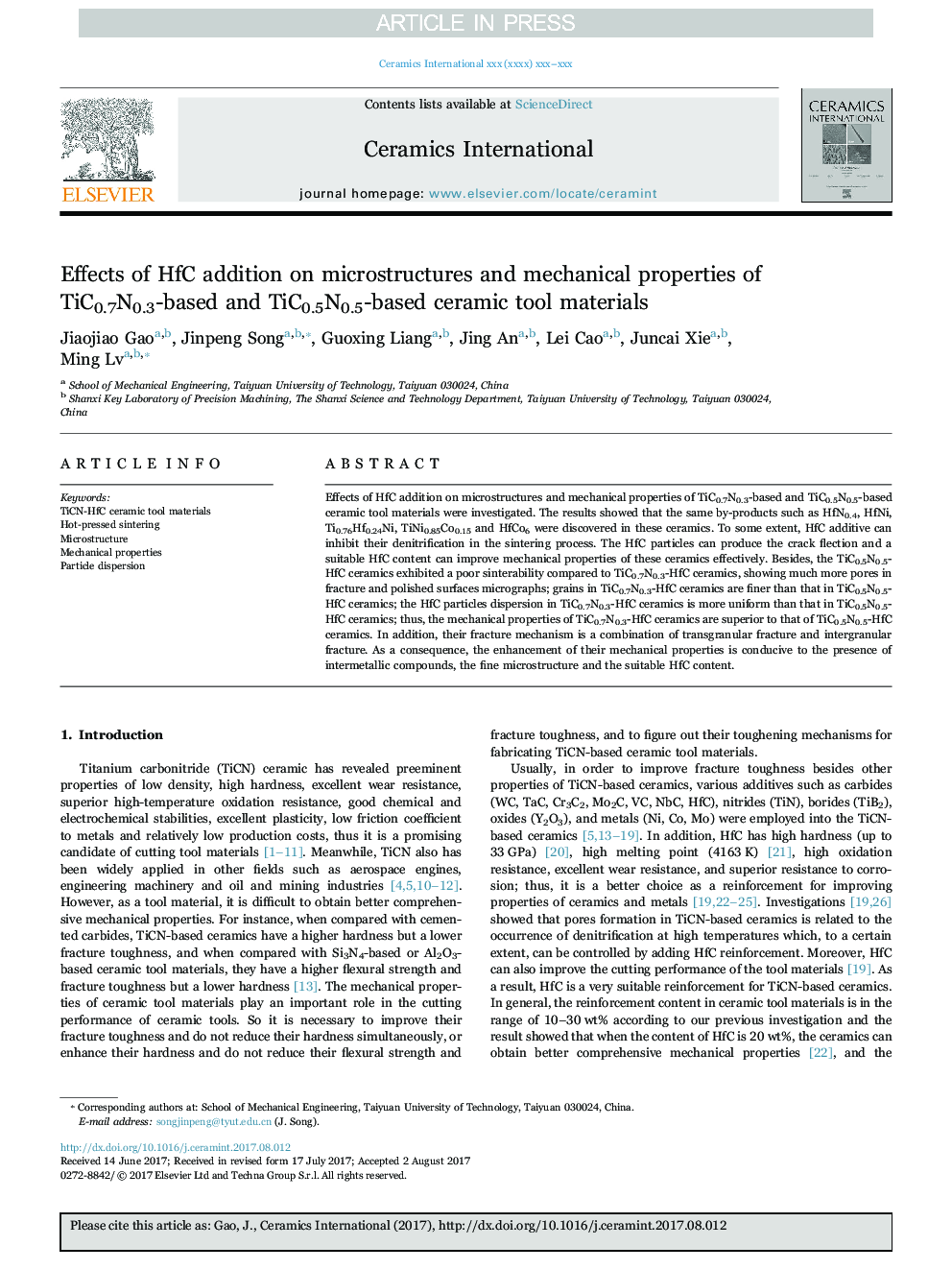| Article ID | Journal | Published Year | Pages | File Type |
|---|---|---|---|---|
| 5437379 | Ceramics International | 2017 | 6 Pages |
Abstract
Effects of HfC addition on microstructures and mechanical properties of TiC0.7N0.3-based and TiC0.5N0.5-based ceramic tool materials were investigated. The results showed that the same by-products such as HfN0.4, HfNi, Ti0.76Hf0.24Ni, TiNi0.85Co0.15 and HfCo6 were discovered in these ceramics. To some extent, HfC additive can inhibit their denitrification in the sintering process. The HfC particles can produce the crack flection and a suitable HfC content can improve mechanical properties of these ceramics effectively. Besides, the TiC0.5N0.5-HfC ceramics exhibited a poor sinterability compared to TiC0.7N0.3-HfC ceramics, showing much more pores in fracture and polished surfaces micrographs; grains in TiC0.7N0.3-HfC ceramics are finer than that in TiC0.5N0.5-HfC ceramics; the HfC particles dispersion in TiC0.7N0.3-HfC ceramics is more uniform than that in TiC0.5N0.5-HfC ceramics; thus, the mechanical properties of TiC0.7N0.3-HfC ceramics are superior to that of TiC0.5N0.5-HfC ceramics. In addition, their fracture mechanism is a combination of transgranular fracture and intergranular fracture. As a consequence, the enhancement of their mechanical properties is conducive to the presence of intermetallic compounds, the fine microstructure and the suitable HfC content.
Related Topics
Physical Sciences and Engineering
Materials Science
Ceramics and Composites
Authors
Jiaojiao Gao, Jinpeng Song, Guoxing Liang, Jing An, Lei Cao, Juncai Xie, Ming Lv,
